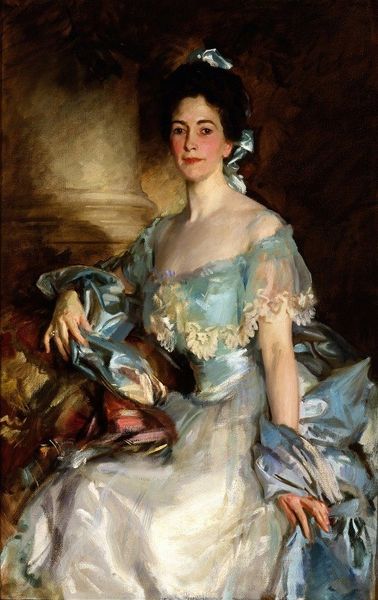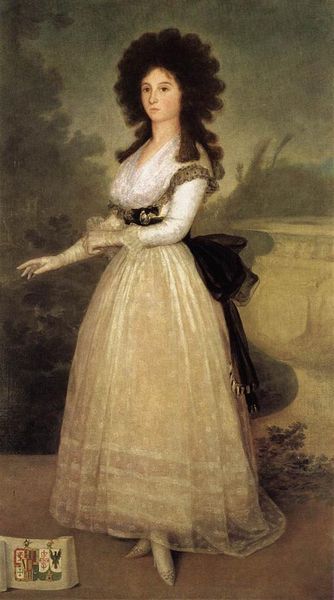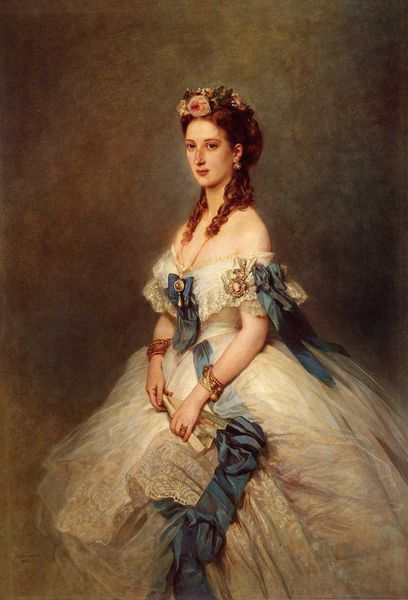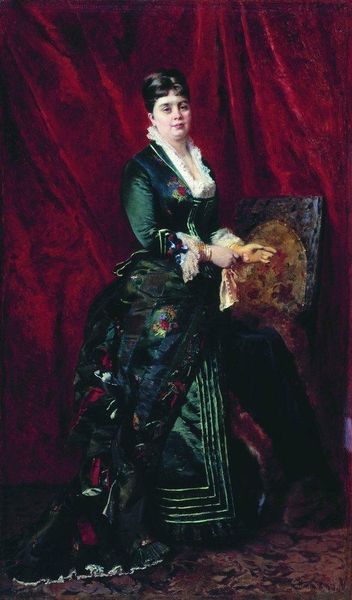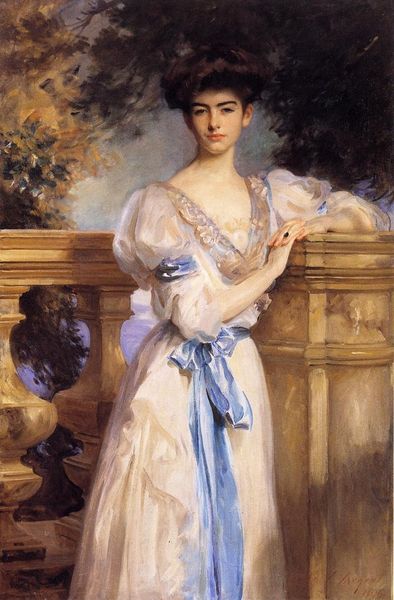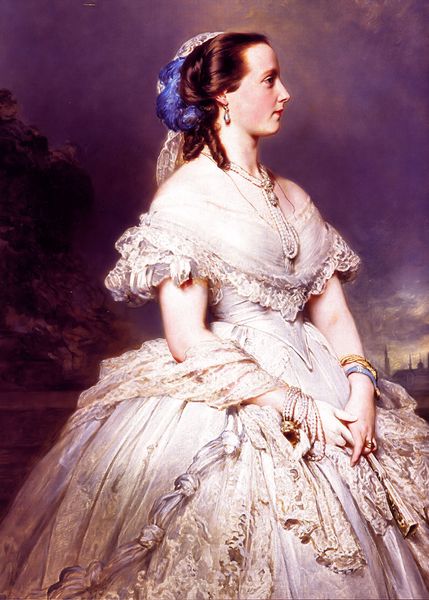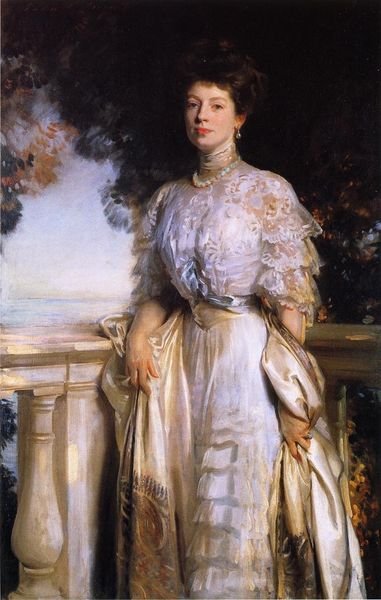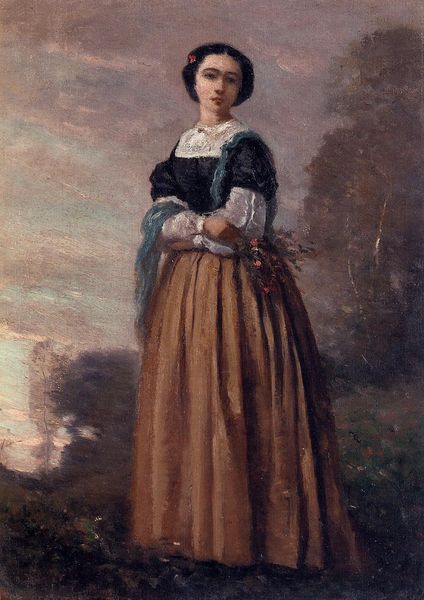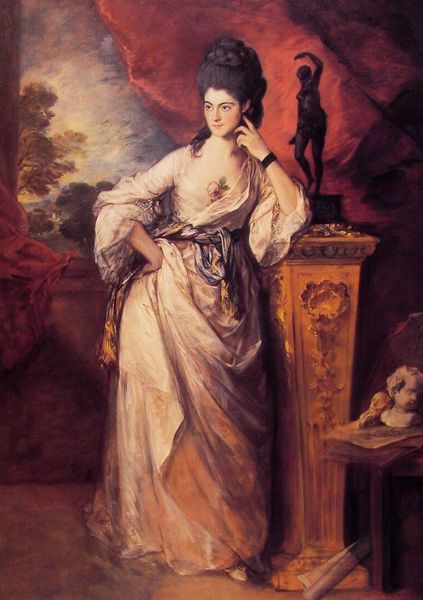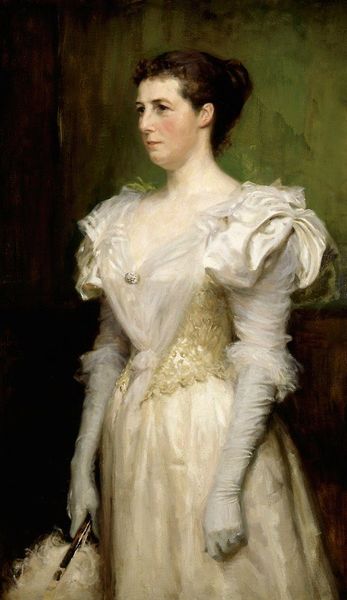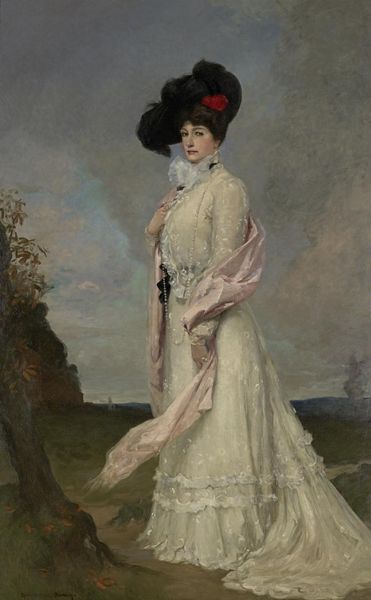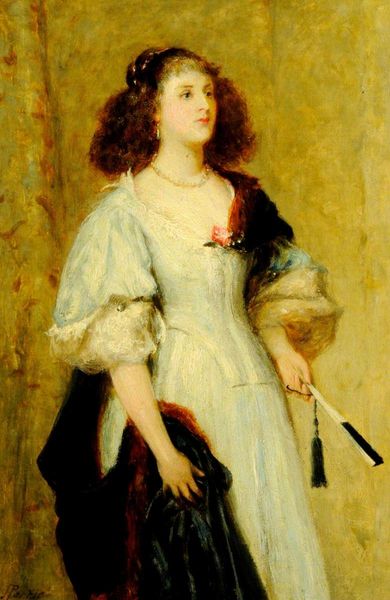
Copyright: Public domain
Curator: Raimundo de Madrazo painted "The Marquise D'Hervey Saint-Denis as Diane" in 1885, an oil-on-canvas that presents the sitter in allegorical guise. Editor: It’s incredibly evocative, a powerful portrait with a stormy landscape adding real drama. The textures of the fabric look almost tactile. Curator: Diane, of course, is the Roman goddess of the hunt, associated with the moon, wilderness, and wild animals. The crescent moon in her hair signals her identity. We can also think about the psychological associations that Madrazo summons, linking his subject with independence and fierce feminine power. Editor: Indeed, but the material trappings temper that image. Her dress, though draped to evoke classical robes, is clearly luxurious. The sheen on that satin…it speaks to the Marquise's social standing far more than any mythic huntress. I find it hard to divorce this “Diana” from the means that put her there. Curator: That's precisely the point. It is through dress, through *presentation,* that nobility conveys power. Madrazo uses the language of classical allegory to ennoble the Marquise, but the symbols also serve as markers of cultural capital and cultivated self-expression. Diane offered nobility with a sense of untouchable femininity. Editor: Yet how constructed it all feels! Consider the labor that went into that dress, the procurement of materials, the skill of the seamstress. Every detail, even the ‘classical’ drape, signifies expense. How much more potent if Madrazo depicted one of those seamstresses, rather than a client in fanciful garb. Curator: Still, in assuming the guise of Diana, the Marquise positions herself within a visual lineage stretching back millennia, aligning with enduring archetypes. Consider what an average woman might believe about a goddess like Diane! Editor: Which leads back to my fascination with production; with paint. See how loosely he's worked in areas, how visible the brushstrokes are? He foregrounds the very *act* of painting, making it evident how her image and power were shaped. It seems Madrazo aimed to hint at, even partially unveil, the mechanism behind icon-making. Curator: A very intriguing suggestion! Looking again, I wonder if that’s another dimension of Diane here, offering a chance to become both subject and icon, through the painted artwork itself. Editor: Ultimately, though a historical work, it is timeless through its emphasis on form, material and its engagement with making.
Comments
No comments
Be the first to comment and join the conversation on the ultimate creative platform.
